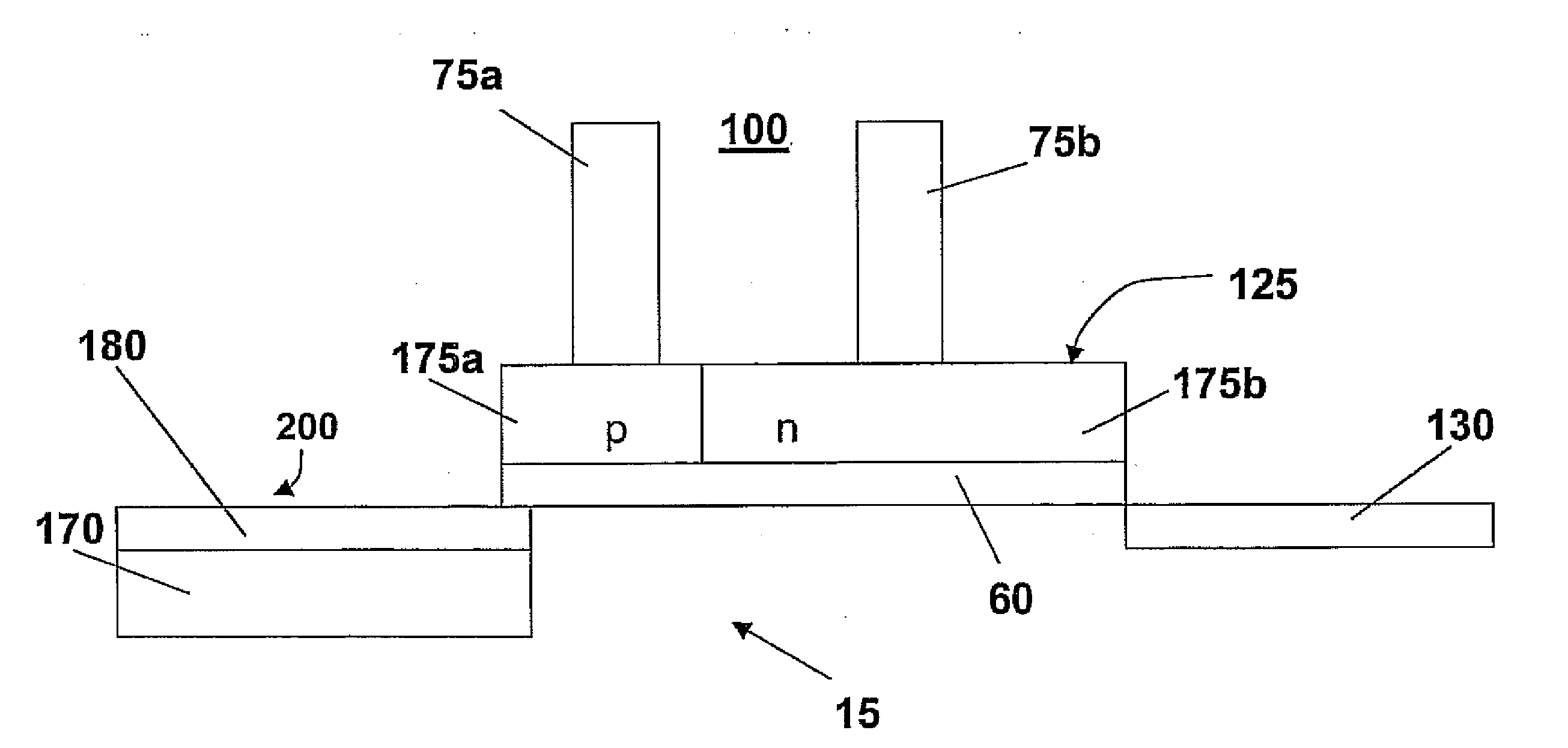Low lag transfer gate device
a transfer gate and low lag technology, applied in the field of semiconductor optical image sensors, can solve problems such as image lag, pixel unusability, and leakage of bright point defects
- Summary
- Abstract
- Description
- Claims
- Application Information
AI Technical Summary
Benefits of technology
Problems solved by technology
Method used
Image
Examples
first embodiment
[0066]Co-pending U.S. patent application Ser. No. 11 / 565,801 entitled “SILICIDE STRAPPING IN IMAGER TRANSFER GATE DEVICE” describes a CMOS active pixel sensor (APS) cell structure having dual workfunction transfer gate device and method of fabrication. The transfer gate device comprises a dielectric layer formed on a substrate and a dual workfunction gate conductor layer formed on the dielectric layer comprising a first conductivity type doped region and an abutting second conductivity type doped region. The transfer gate device defines a channel region where charge accumulated by a photosensing device is transferred to a diffusion region. The disclosed APS cell structure includes a silicide structure formed atop the dual workfunction gate conductor layer for electrically coupling the first and second conductivity type doped regions for improved gate barrier ac characteristics. FIG. 3 illustrates, through a cross-sectional view, a CMOS imager APS 100 including photosensing device, e...
second embodiment
[0067]In an alternate embodiment of the invention, instead of a diodic transfer gate structure, the transfer gate comprises two distinct gate structures separated by a small distance with each gate structure doped with opposite conductivity type. More specifically, FIG. 4 illustrates, through a cross-sectional view, a back end of line CMOS imager APS 100′ including photosensing device, e.g., photodiode 200 formed at one side of a silicon-containing, e.g., polysilicon, transfer gate device 125′ according to the invention, and, an n-type floating diffusion region 130 at the other side of the transfer gate 125′. The polysilicon transfer gate 125′ includes a first p-type doped gate structure 176a and a second n-type doped gate structure 176b separated a small distance which, in one embodiment, may be 200 nm or less, e.g., about 100 nm, although, it is understood that there is no minimum spacing, just minimum resolvable image sizes. Each of the doped gate structures are formed over the t...
PUM
 Login to View More
Login to View More Abstract
Description
Claims
Application Information
 Login to View More
Login to View More - R&D
- Intellectual Property
- Life Sciences
- Materials
- Tech Scout
- Unparalleled Data Quality
- Higher Quality Content
- 60% Fewer Hallucinations
Browse by: Latest US Patents, China's latest patents, Technical Efficacy Thesaurus, Application Domain, Technology Topic, Popular Technical Reports.
© 2025 PatSnap. All rights reserved.Legal|Privacy policy|Modern Slavery Act Transparency Statement|Sitemap|About US| Contact US: help@patsnap.com



